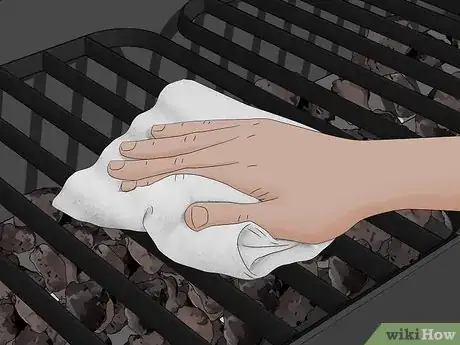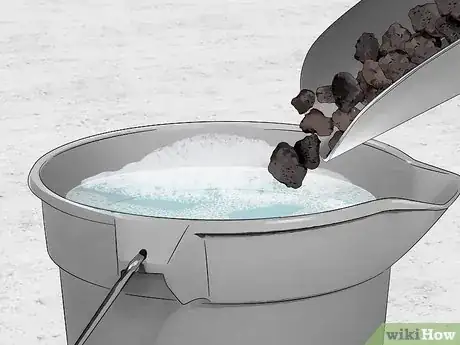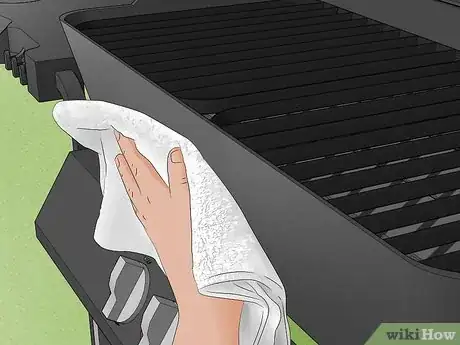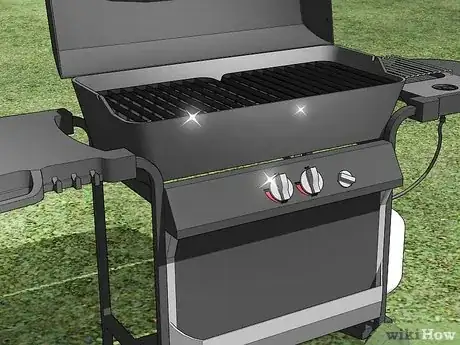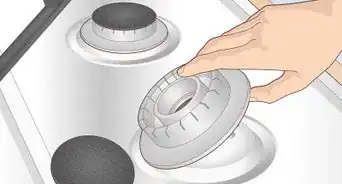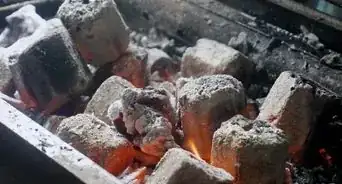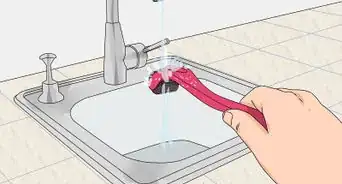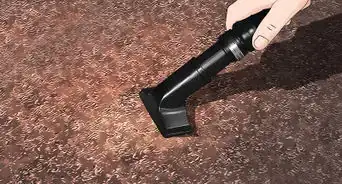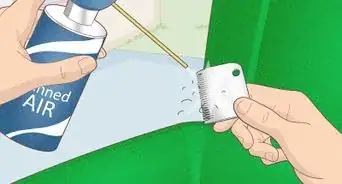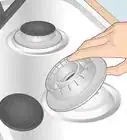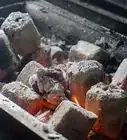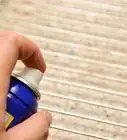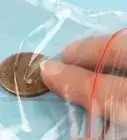X
This article was co-authored by Regina DeCorte. Regina DeCorte is a Residential Cleaning Specialist and is the Founder of Maid in JC, a home cleaning service based in downtown Jersey City, NJ. With more than eight years of experience, she specializes in cleaning apartments, condos, and townhomes using natural products. Regina and her staff are fully bonded and insured.
This article has been viewed 116,366 times.
A quick guide on how to clean your barbecue quick and effectively using these proven methods.
Steps
-
1Wash at the end of a cookout when the barbecue is still warm, and the grime has not had time to cake on yet. If you're still entertaining and do not fancy this, or simply forget, there are still possibilities. For lidded barbecues, a nice way of softening up grime is to position a water-soaked newspaper or equivalent within and make use of a gentle heat again for half an hour or so. This will basically steam clean the whole inside, and you will laugh as you gently clean away the grime afterwards. Obviously this is simple for gas models, however if you have charcoal try using several small pieces of firewood or even other very easily flammable material to obtain some heat going, or even just a few coals if you must. Keep an eye on the newspaper though and ensure it doesn't burn or you’ll have more mess on your hands! Whether you steam or not, chemical cleansers are also a great option. Remove the grill and place on some newspaper, and squirt liberally with stove solution or other spray on cleansers (like you would use in your kitchen area) and leave for an hour or so.
-
2Use special scrubbing stones or even scrapers which you can buy to break off tough, brittle dirt. Much softer mess can be removed with a regular soft cloth or skillet scourers. Be cautious with enamel-coated grills, you should loosen dirt really well first and then use a gentle pressure as possible. Lastly, give the barbecue a good wash and leave in order to dry.Advertisement
-
3If you have managed to steam-soften the inside of the barbecue itself then things ought to be easier. For straightforward grilling with charcoal barbecues, scoop or tip out any coal mess, and clean up the final bits with some damp kitchen roll. Now wipe the surfaces down with a soft cloth covered in spray cleaner, gently scrubbing any stubborn places. In the event that there are areas which have burnt on food you can’t remove, you may have to spray on some stove cleaner and leave for some time but read the cleaner directions to make sure it's suitable for the surface in question (i.e. enamel, painted, metal and so on). Don’t worry about the base where the hot coals sit as this is unlikely to be looking great because scuffs and burns develop here. So long as it is clean and free from aged waste materials you won’t get any nasty odors in the next cookout. Gas barbecues can be a little more tricky. Numerous places could be cleaned out just as with the techniques above, but gas outlets and lava rocks etc add extra work.
-
4Start by getting rid of any kind of lava rocks or ceramic coals and put all of them into a bucket of warm soapy water. If you're able to now clean around the burners and bars with ease - great. However, you may have to remove some parts to clean them properly, so consult your guide, and remember to not begin removing any gas-ferrying components that you're unclear about. Put them back again when you are done, and scrub the lava rocks/coals in the bucket if requirements be and wash them in fresh water. You may find these need replacing after a year or so if they are gathering grime. Lastly, rinse the interior of the charcoal or gas barbecue with a hose or a bucket of water until it looks nice and sparkly, and replace the actual lava rocks and so on. Replace the actual barbecue grill and stand back to admire your work.
-
5Clean the outside. The outside of the barbecue is easy. Simply wipe it down with a moist cloth, adding a suitable solution - regular cleaning up liquid should be fine, but you can get stainless polishing spray or other material-specific cleaners. Gas control knobs can often be removed to wash, which is essential as you do not want grime to accumulate and cause stiffness. Be cautious with any flaky paint or even chipping enamel – you can always retouch these places but be sure you consult either a guide or the manufacturer first on what precisely to use. Once clean, buff the outside with a dry cloth and add any kind of preservative films you want. Some people recommend wiping down stainless steel models with oil (even baby oil) to keep the weather at bay, but don’t worry too much. It is a good idea to take time to preserve any kind of wooden areas though with a dedicated barbecue wood oil treatment. Please, please watch out for chemical preservatives or treatments you utilize elsewhere in the home. Some may be flammable and also have no place on a barbecue!
-
6If you want to minimize work later on, try spraying the actual barbecue grill with oil before you cook to really make it more non-stick. In addition, if the coal area is looking exhausted, add a slim coating of sand which will protect it. Remember to cover your barbecue or place it in the garage if you have 1. You will be grateful you did whenever you roll it looking all gleaming for the next time.
-
7Finished.
Advertisement
Community Q&A
-
QuestionHow do I start up a barbecue that has been in storage?
 MicheleTop AnswererIt needs to be thoroughly cleaned. If it was in storage long enough to get some rust on it or peeling enamel, take it to a professional BBQ company. They may try to sell you a new one and it's possible that your's will be beyond redemption, but ask them to give it a try. It's a last resort if you can't get it thoroughly cleaned: inside, outside, grill and all connections, before you attempt to hook up any gas.
MicheleTop AnswererIt needs to be thoroughly cleaned. If it was in storage long enough to get some rust on it or peeling enamel, take it to a professional BBQ company. They may try to sell you a new one and it's possible that your's will be beyond redemption, but ask them to give it a try. It's a last resort if you can't get it thoroughly cleaned: inside, outside, grill and all connections, before you attempt to hook up any gas. -
QuestionThe stainless steel side tables are all sticky, how do I clean this?
 Community AnswerI would use a vinegar solution at a 50/50 ratio (half vinegar, half water). Spray the area, wait for about 10 minutes, then wipe it down. Another option is to make a paste of baking soda and water (thick, yet a little runny) and apply it to the sticky area. Allow it to set for 15-20 minutes, then wipe it clean.
Community AnswerI would use a vinegar solution at a 50/50 ratio (half vinegar, half water). Spray the area, wait for about 10 minutes, then wipe it down. Another option is to make a paste of baking soda and water (thick, yet a little runny) and apply it to the sticky area. Allow it to set for 15-20 minutes, then wipe it clean.
Advertisement
About This Article
Advertisement


